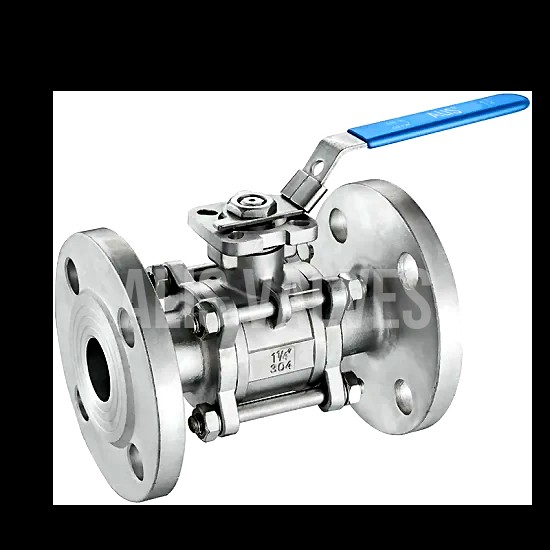Industrial valves play a critical role in regulating the flow of fluids and gases in various industries, including oil & gas, power generation, and water treatment. As these sectors face growing demands for efficiency, safety, and sustainability, industrial valve technology is evolving rapidly to meet new challenges. Whether it’s adapting to high-pressure conditions in oil and gas extraction, ensuring precise control in power plants, or addressing the complexities of water distribution systems, industrial valvesare key to maintaining system integrity and performance.
In this article, we will explore the latest industrial valve trends and how they are influencing the oil & gas, power, and water industries. We'll discuss advancements in materials, automation, safety, sustainability, and digital technologies that are shaping the future of valve manufacturing and operation.
1. Increasing Use of Advanced Materials for Durability and Performance
The oil & gas, power, and water industries all demand valves capable of withstanding harsh environments and extreme operating conditions. To address this need, manufacturers are increasingly focusing on advanced materials that enhance the durability and performance of industrial valves.
In the oil & gas sector, valves must endure high pressure, temperature fluctuations, and corrosive substances. Advanced alloys like Inconel, duplex stainless steel, and Hastelloy are gaining traction due to their ability to resist corrosion and maintain integrity in challenging environments. Similarly, non-metallic materials such as thermoplastics and composites are being used in valves for water treatment applications, where chemical resistance and lower maintenance costs are essential.
Key Trends in Valve Materials:
- Corrosion Resistance: In industries like oil & gas and water treatment, the ability to withstand corrosion is critical for extending valve life and reducing maintenance costs.
- High-Temperature and High-Pressure Performance: Power plants and petrochemical facilities are increasingly using valves made from high-strength alloys that can perform reliably in extreme conditions.
- Composite and Polymer Valves: The water industry is adopting valves made from lightweight and cost-effective composite materials that resist chemical and mechanical wear.
2. Adoption of Automation and Smart Valves
Automation is one of the most transformative trends in industrial valve technology. The oil & gas, power, and water industries are embracing automated valve systems that can operate with minimal human intervention, enhancing efficiency, reliability, and safety. Automated valves, equipped with actuators, sensors, and control systems, allow operators to monitor and adjust valve settings remotely in real time.
Smart valves, which are integrated with the Internet of Things (IoT) and data analytics, are taking automation to the next level. These valves are capable of self-regulation based on input from sensors that track variables such as flow rate, pressure, and temperature. By continuously monitoring system performance, smart valves can make real-time adjustments, ensuring optimal operation without manual oversight.
Automation and Smart Valve Trends:
- Remote Monitoring and Control: Operators can manage valve systems from a central control room, reducing the need for on-site personnel in remote or hazardous environments.
- Predictive Maintenance: Smart valves use IoT sensors and data analytics to predict when maintenance is needed, reducing downtime and extending valve life.
- Improved Efficiency: Automated valves optimize flow control, reducing energy consumption and improving overall process efficiency, which is especially critical in the power generation and oil & gas industries.
3. Emphasis on Safety and Environmental Compliance
Safety is a top priority in the oil & gas, power, and water sectors, where valve failures can lead to catastrophic consequences, including equipment damage, environmental spills, and even loss of life. As a result, valve manufacturers are prioritizing the development of valves that meet stringent safety and environmental regulations.
In the oil & gas industry, particularly in offshore drilling and high-pressure pipeline systems, valves must comply with strict standards such as API 6D and ASME B16.34. Manufacturers are also focusing on the development of fail-safe valves, which are designed to default to a safe position (open or closed) in the event of a system failure.
Environmental regulations are driving the demand for valves that reduce emissions and minimize leaks. Fugitive emissions control is a key area of focus, particularly in the oil & gas and power industries, where leakage of volatile organic compounds (VOCs) can have serious environmental and regulatory consequences.
Safety and Compliance Trends:
- Leak Prevention and Control: Valves with advanced sealing technologies and materials are essential for preventing leaks and reducing fugitive emissions.
- Fail-Safe Designs: Valves that default to a safe position in case of power or system failure help mitigate risks in hazardous environments.
- Compliance with Environmental Regulations: Manufacturers are focusing on developing valves that meet the latest environmental standards, particularly regarding emissions control.

4. Sustainability and Energy Efficiency
Sustainability is becoming increasingly important across all industries, and valve technology is evolving to support greener operations. In the oil & gas and power sectors, where energy efficiency is critical, valves are being designed to minimize energy losses by optimizing flow control and reducing pressure drops. This is especially important in power plants, where even small improvements in valve performance can lead to significant energy savings over time.
In the water industry, sustainability is closely tied to resource conservation. Efficient valve systems that minimize water waste are essential for ensuring reliable and sustainable water supply. Additionally, valves that enable the integration of renewable energy sources, such as hydroelectric power, are helping to support the transition to greener energy production.
Sustainability Trends in Valve Technology:
- Energy-Efficient Designs: Valves that reduce pressure drops and improve flow control are helping to reduce energy consumption in power plants and industrial processes.
- Water Conservation: The water industry is increasingly using valves that minimize leakage and water waste, supporting sustainable water management practices.
- Integration with Renewable Energy: Valves that control the flow of renewable energy sources, such as hydroelectric or geothermal power, are contributing to the global shift toward sustainable energy.
5. Digital Transformation and Industry 4.0
The industrial valve sector is experiencing a digital transformation driven by the adoption of Industry 4.0 technologies. This trend is characterized by the integration of digital tools such as IoT, artificial intelligence (AI), big data analytics, and digital twins into valve systems. These technologies are enabling more precise control, enhanced predictive maintenance, and greater system optimization across industries.
Digital twins, which are virtual representations of physical valve systems, allow operators to simulate and optimize valve performance in real time. This technology is particularly valuable in the power and oil & gas industries, where complex valve networks must operate under varying conditions. By simulating different scenarios, digital twins help operators predict how valves will behave in different situations and make data-driven decisions to enhance performance and safety.
Digital Transformation Trends:
- IoT-Enabled Valves: Sensors embedded in valves provide real-time data that can be analyzed to optimize performance and detect issues before they escalate.
- AI and Machine Learning: These technologies are being used to analyze valve performance data and make predictive recommendations for maintenance and optimization.
- Digital Twins: The use of digital twins enables operators to simulate valve behavior, improving decision-making and reducing the risk of system failures.
6. Customization and Modular Valve Designs
Industries such as oil & gas, power, and water are demanding more specialized valve solutions that can be tailored to their unique operational requirements. This has led to a trend toward customization and modular valve designs. Modular valves are designed with interchangeable components, allowing for easy upgrades, maintenance, and customization based on specific industry needs.
For example, in power generation, valves may need to handle a wide range of temperatures and pressures depending on the plant’s fuel source and output requirements. Similarly, water treatment facilities may require valves that can be customized to handle different chemical compositions and flow rates.
Customization and Modular Trends:
- Modular Valve Systems: These systems allow for easy upgrades and adjustments, reducing downtime and enhancing operational flexibility.
- Tailored Solutions: Industries are seeking valve manufacturers that can provide customized solutions to meet specific operational challenges, from handling high-pressure steam in power plants to managing complex chemical mixtures in water treatment.
Conclusion
The oil & gas, power, and water industries are experiencing significant shifts in industrial valve technology as they strive to meet the demands of efficiency, safety, and sustainability. Advancements in materials, automation, safety, and digital technologies are driving innovation, transforming valve manufacturing and operation. As these industries continue to evolve, staying ahead of the latest valve trends will be crucial for maintaining competitive advantage, optimizing performance, and achieving long-term success.



